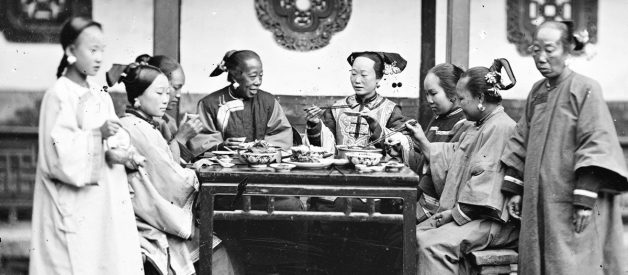Prepare to enter the 37th chamber of Shaolin.
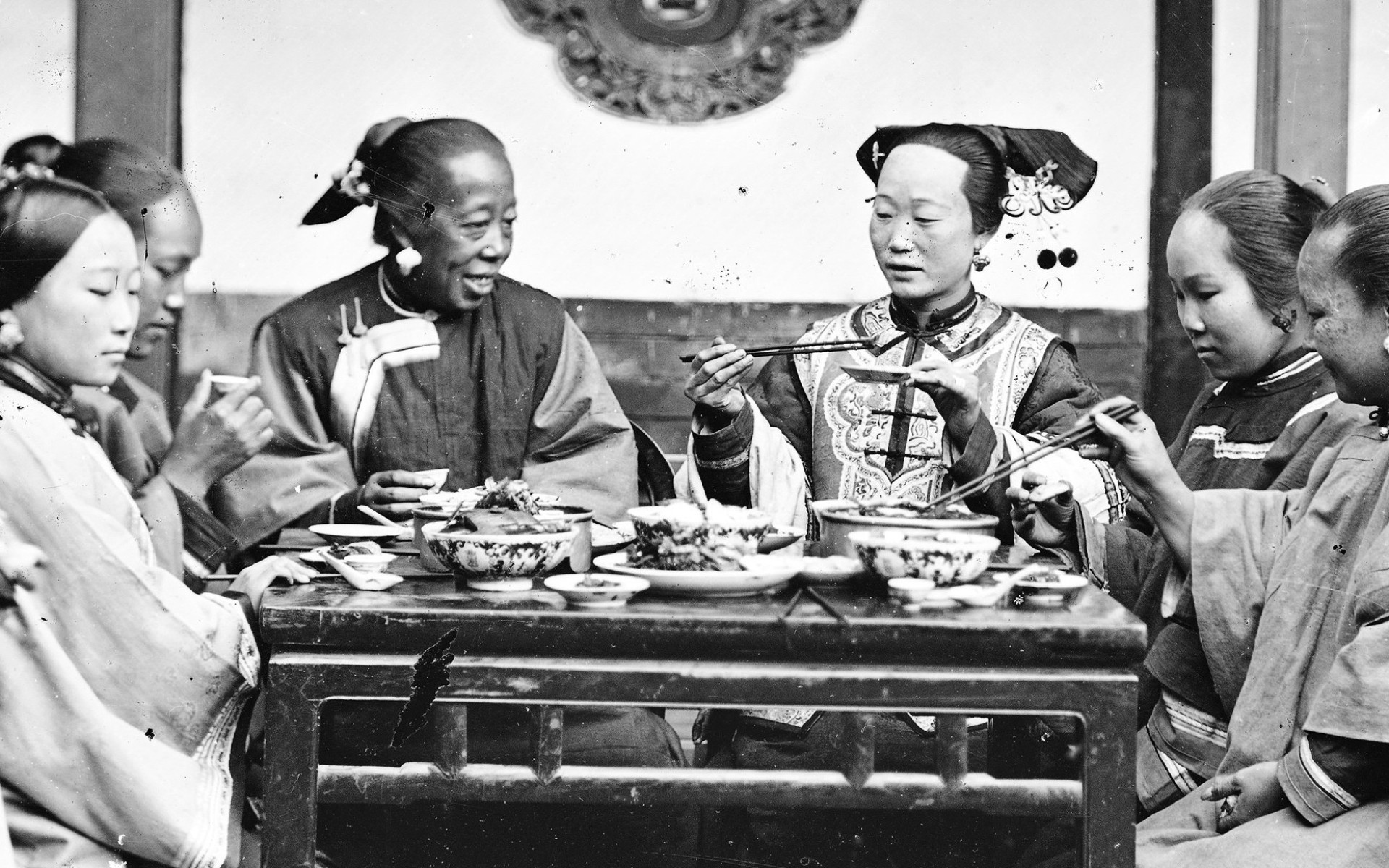 ?Manchu ladies at a meal table? by John Thomson. Peking, China, 1869. Credit: Wellcome Collection]
?Manchu ladies at a meal table? by John Thomson. Peking, China, 1869. Credit: Wellcome Collection]
In a once-popular commercial for Calgon detergent in the 1970s, a curious housewife probes the Chinese owner of the local laundry for the answer to one of the world?s eternal mysteries: ?How do you get shirts so clean, Mr. Lee?? After peering over his shoulder (so as to be sure that his not-so-discreet wife isn?t standing near) the man turns back around, raises a finger to his lips and says through a smile, ?Ancient Chinese secret!?
While the answer to the question posed to the laundry owner by the woman was a closely guarded secret ? one that his sweet, no-nonsense wife happily ruined ? it was neither ancient nor even Chinese in origin. But the TV spot famously tapped into one of the most enduring legends about the country whose Ming Dynasty rulers had a 16-to-26 foot wall built around it: the age-old traditions of secrecy.
And, like Vegas, what happened in China very often stayed in China.
Take the black Chinese who once made up a portion of the population before China?s modern era, for example. The fact that you?ve never heard of them proves the point. But don?t worry. You?re not alone. China has some 1.3 billion people and nearly all are just as in the dark about them. Well, either that or a billion people all swore to never-ever-never air any [ahem] ?dirty laundry? about black folks formerly having a place in China?s allegedly homogeneous society.
Frankly, even an ancient culture with the bragging rights to the ?longest continually recorded history? is bound to miss a few things. The former presence ? up until sometime in the 20th century ? of black people in pre-modern China is one of them. Fortunately, though, old photos taken throughout China around the advent of photography can help us to fill in today some of what the historians missed.
Manchu Ladies in Black & White
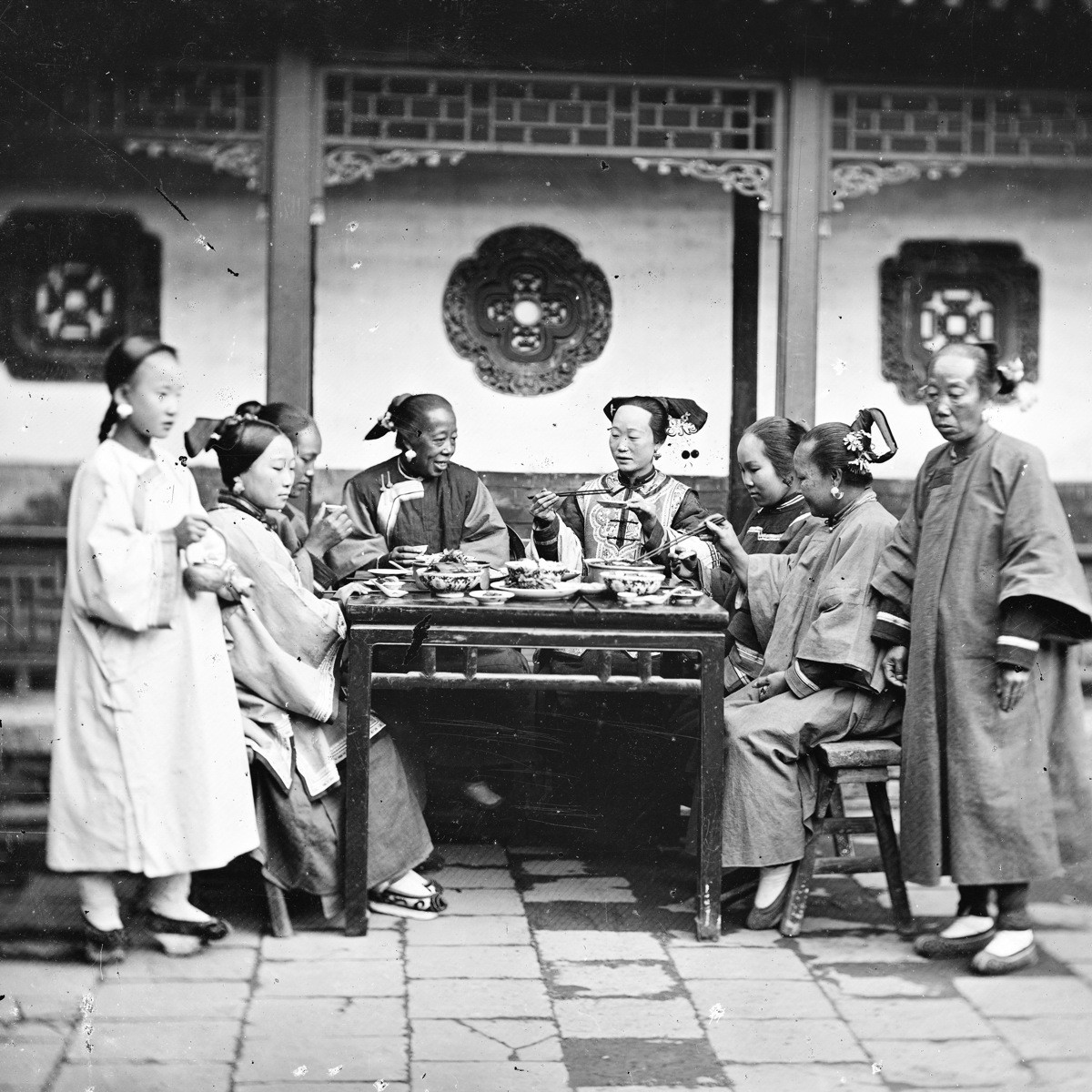 Author: John Thomson, 1869 / Credit: Wellcome Collection
Author: John Thomson, 1869 / Credit: Wellcome Collection
China?s Qing Dynasty, established by the Manchu people who ruled from 1644?1912, is described as having been a vast multicultural empire. But it appears multicultural could also be a more pleasant euphemism for multiracial. Nothing illustrates this better than the black and white photos taken by visitors from Europe in the mid-to-late 1800s. John Thomson, an Irish photographer, was one of the first to capture images that reveal a surprisingly more diverse makeup of then-contemporary China.
In one of the most stunning photos taken by Thomson, six women dine together in a courtyard. Captioned ?Manchu ladies at a meal,? the picture was taken in 1869 in the city of Peking (now Beijing). Seated at the center of the photo are two women: on the right sits a typical high class Manchu and on the left sits a smiling black woman ? who could easily pass as the mother of the RZA, the GZA, Ol? Dirty Bastard, or any other member of the Wu-Tang Clan.
Apart from the physical differences in the women (including the two who were likely seated, but stood for the picture), what?s also remarkable is that when Thomson writes about them, he makes no distinctions ? though there were both racial and class differences; some of them were most assuredly attendants or maids. But in the view of Thomson, they were all simply Manchu ladies sharing a meal on a day when he sought interesting subjects to photograph.
Girl from Lao Cai
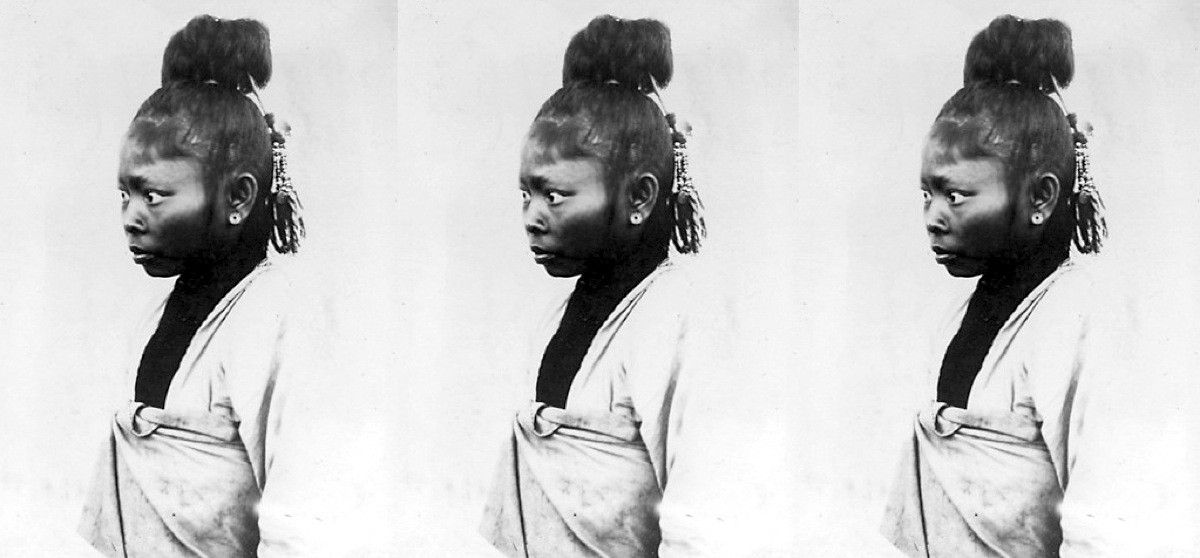 Author: Ren Ttard 1919?1926
Author: Ren Ttard 1919?1926
Speaking of interesting subjects, the young girl in this photograph taken by French photographer Ren Ttard was, by far, one of the most interesting to ever pass before this writer?s eyes. The photo was taken in Lao Cai, an old town located in the Tonkin (formerly ?Tongking?) region of mountainous northern Vietnam, on the border of China?s Yunnan province. Several centuries ago, under the Tang Dynasty, Tonkin was part of what made up the southernmost province of the Chinese Empire, which was then called Annam, Chinese for Pacified South.
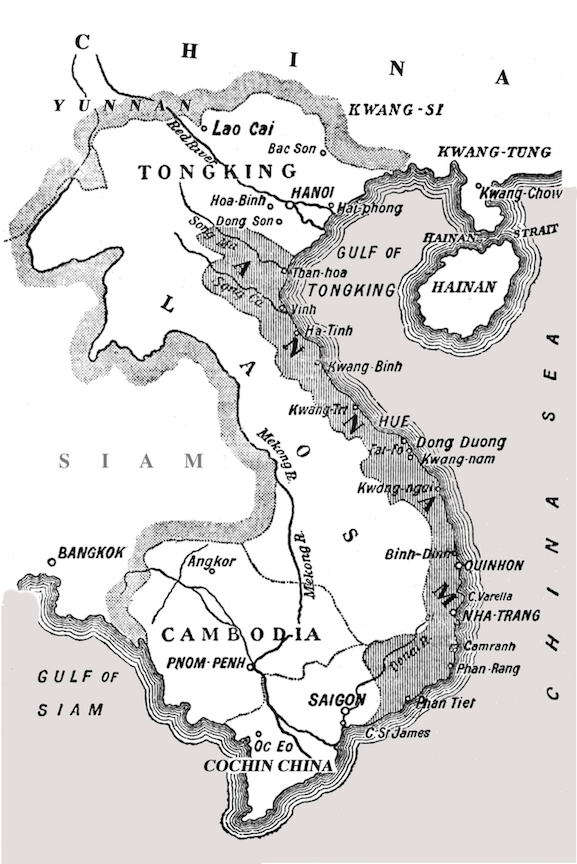
Written accounts by early Chinese historians tell us that the Tonkin region and its adjacent areas were once a hotbed of various non-Han Chinese peoples, including those from whom the Lao Cai girl descends. But with the southward advance of the Han Chinese, such groups were pushed even further south, or gradually assimilated into the dominant population. The hairstyle, jewelry and clothing of the Lao Cai girl show her assimilation into Chinese society.
Historian Thant Myint-U writes in Where China Meets India that during the 9th century, the Chinese ethnographer Fan Cho compiled the Man Shu, or ?Book of the Southern Barbarians.? Fan Cho describes there the varied peoples living in and around Yunnan. Included among them were the Wu-man or ?black southern barbarians,? so-called for their dark complexions. And ironically, the French author of the Lao Cai photo had the image annotated with the Chinese word ?Man,? and ? sadly ? with the Vietnamese ?Xa? (or Kha), signifying servant or slave.
A French Photographer in Yunnan Province
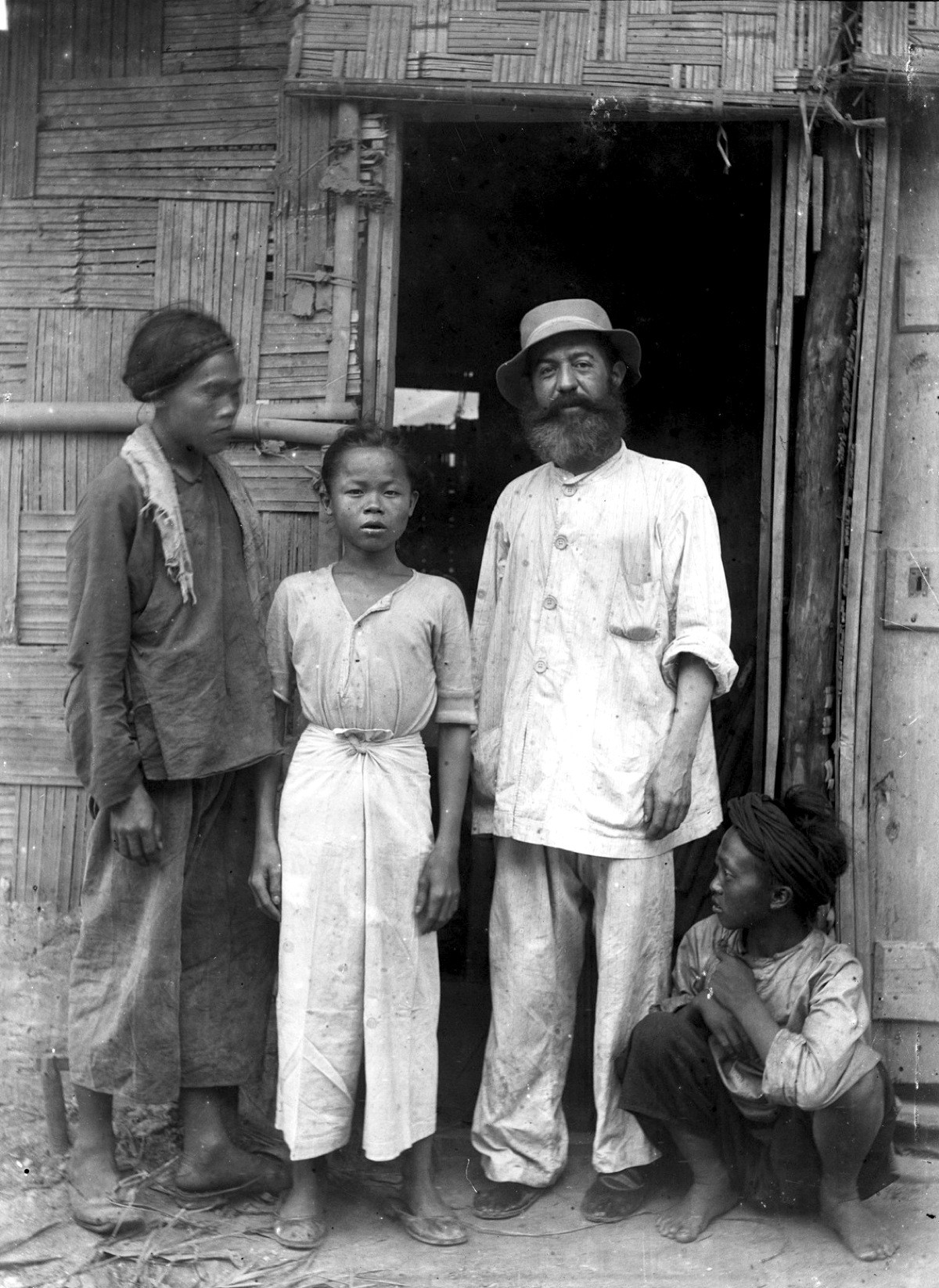 Portrait of Georges-Auguste Marbotte 1903?1906
Portrait of Georges-Auguste Marbotte 1903?1906
This photo above was taken in China?s Yunnan province during the time in the early 1900s, when a railroad was being built through the mountainous region then controlled by the French. While all three of the youths pictured with the French photographer Georges-Auguste Marbotte display similar southern Chinese physical characteristics, the young boy crouched beside Marbotte could pass as a twin to the lovely Lao Cai girl, who lived across the border at roughly the same time.
A Family Eating a Meal
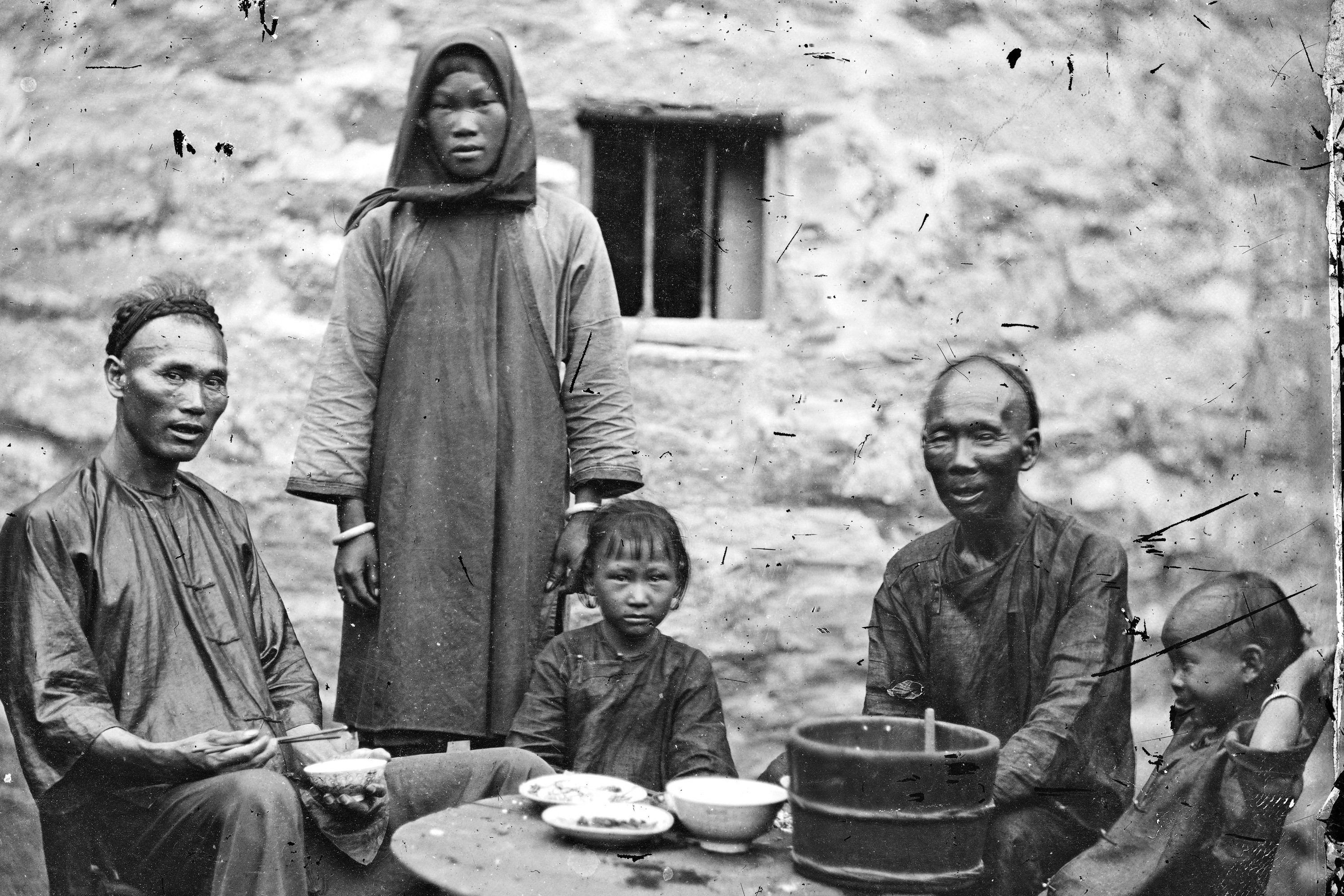 Author: John Thomson, 1869 / Credit: Wellcome Collection
Author: John Thomson, 1869 / Credit: Wellcome Collection
John Thomson?s photo of a family partaking of a meal was taken in 1869 in the Kowloon area of Hong Kong, the famed city situated in China?s Guangdong province. The image shows a tall woman standing as two men, possibly her husband and father, and her young children are seated around a small round table. On the table are various bowls from which the family has eaten, as well as a large wooden bowl used to hold rice.
The woman?s dark complexion, her facial features (similar to those of the older man) and her height reflect a striking blend of different ethnic characteristics. These are passed down to the children, whose hairstyles, like that of their parents and grandparent, also reflect the customary bangs of Chinese women and the long braid and partially shaved head that men were required to wear as subjects the Qing dynasty.
Two Girls at Pei Nin Ting
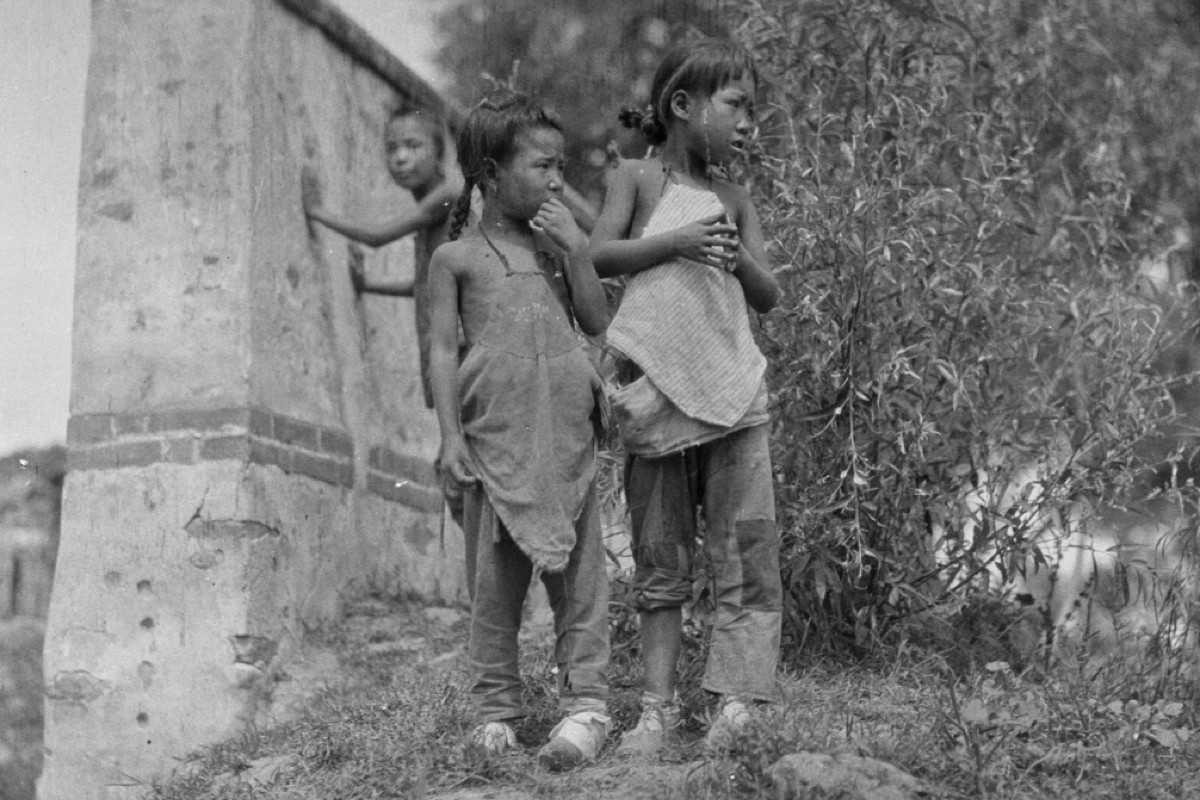 Two Girls at Pei Nin Ting by Sidney D. Gamble, 1917?1919 / Credit: David M. Rubenstein Rare Book & Manuscript Library, Duke University
Two Girls at Pei Nin Ting by Sidney D. Gamble, 1917?1919 / Credit: David M. Rubenstein Rare Book & Manuscript Library, Duke University
American photographer Sidney D. Gamble recorded the location of this photograph with two little girls at its center as ?Pei Nin Ting.? The shot was captured between the years of 1917 and 1919. A failed Google search, followed by a surprisingly fruitful search of works archived on Google Books, led to the mountainous Pei Niu Ting region of China?s Beidaihe District, a coastal resort area located in Qinhuangdao, in Hebei province.
Another photo by Gamble captures the beach at Peitaiho (the former name of Beidaihe), confirming the location of the two little girls. Qinhuangdao, it?s worth noting, is about 200 miles east of Beijing, China?s capital city, located in the north of the country. To find a photo showing little humans who look like these two so far north of Yunnan and the bordering Tonkin was quite the surprise. But there were still more surprises to come.
A Mother with Two Children
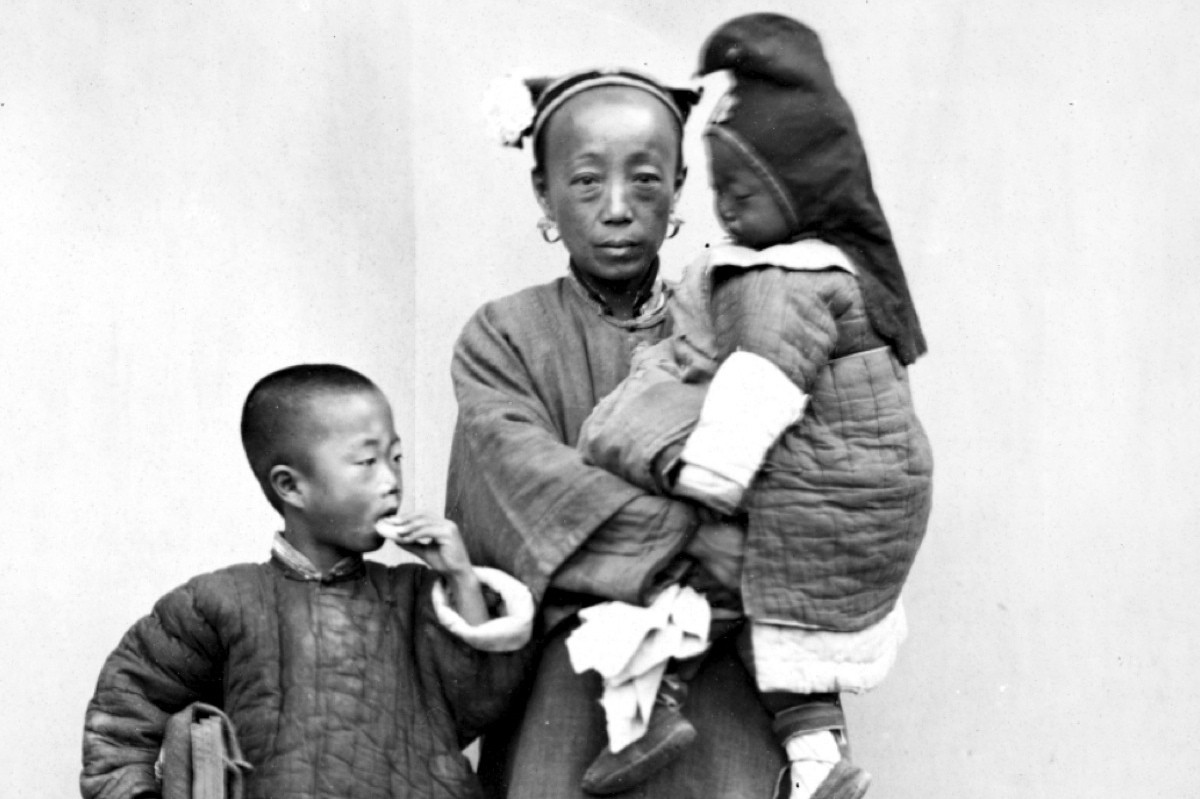 Author: John Thomson, 1869 / Credit: Wellcome Collection
Author: John Thomson, 1869 / Credit: Wellcome Collection
With this photo of a mother and her two children by John Thomson, taken on the streets of Peking (now Beijing), something finally clicked. For reasons that won?t be detailed here (as it would take far too long to explain) more than a decade of research into the peopling of Asia seemed to suggest that any black Chinese still living in the age of photography would likely all be found in southernmost China. This photo, however, like the one atop this essay, was taken in Peking in 1869. And while the relationship between the woman and the boy may not be a biological one, that between the woman and the child in her arms seems certain.
Smiling Boy in Tattered Rags
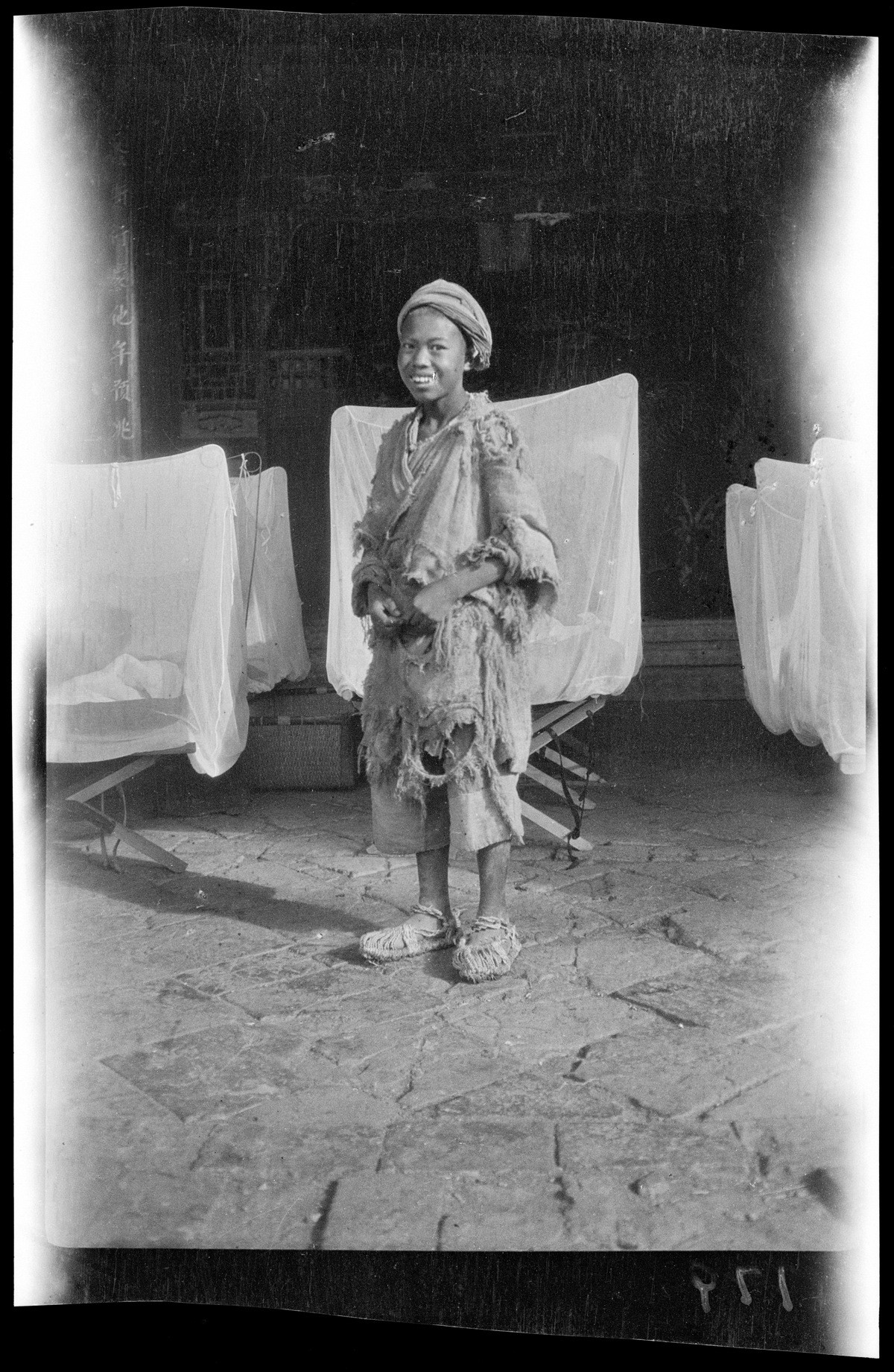 Ragged Kid & Cots, So Village by Sidney D. Gamble, 1917?1919 / Credit: David M. Rubenstein Rare Book & Manuscript Library, Duke University
Ragged Kid & Cots, So Village by Sidney D. Gamble, 1917?1919 / Credit: David M. Rubenstein Rare Book & Manuscript Library, Duke University
In west central China, to the north of Yunnan, is Sichuan province, one of the largest provinces in the country. Many Americans today are familiar with its Romanized spelling as ?Szechwan,? which made up part of the name of a now discontinued Chicken McNuggets dipping sauce ? and helped to make Szechwan a household name some two decades ago. Anywho, Sidney D. Gamble?s photo of a smiling boy dressed in terribly tattered rags was taken in a town called So Village, situated somewhere in Sichuan (or Szechwan) province.
A Hospital Room in Foochow
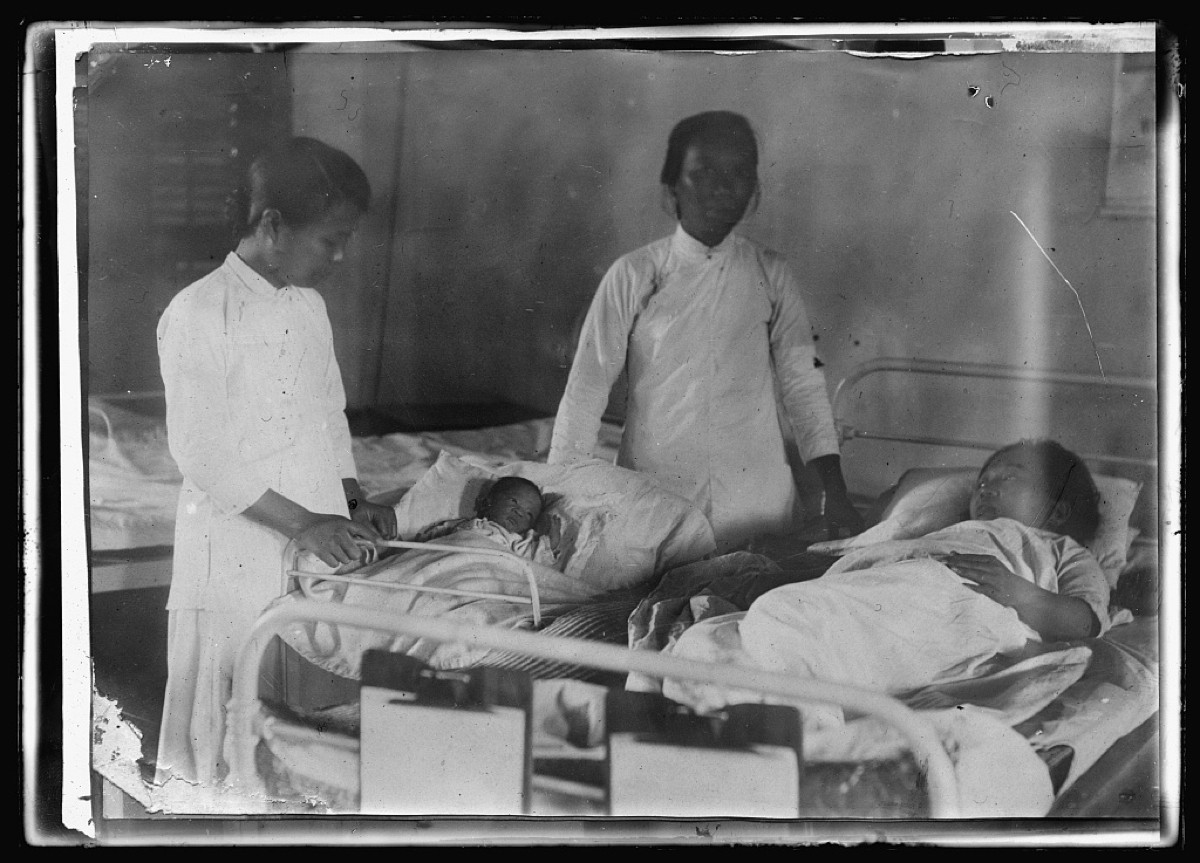 Author: American Red Cross, 1919 [Credit: Library of Congress]
Author: American Red Cross, 1919 [Credit: Library of Congress]
There were even fewer details than the tidbits of information found with the other images included in this post, but the photo above of two nurses, a mother and her newborn was taken at Magaw Memorial Hospital in the city of Foochow in October of 1919. This dating would make the women?s lives contemporary with the smiling boy in tattered rags (above), the two little girls at Pei Nin Ting, and the girl from Lao Cai.
Fuzhou (spelling changed from the Romanized ?Foochow?) is the capitol of southeastern China?s Fujian province. Fujian province shares its borders with four other provinces: Zhejiang to the north, Jiangxi to the west, Taiwan Island to the east, and Guangdong (Canton) to the south. In the effort to connect more dots in the mind of the reader, Hong Kong?s Kowloon city, where Thomson?s photo of a poor family eating a meal was taken, is located in Guangdong.
A Contrast of Chinese Ethnic Types
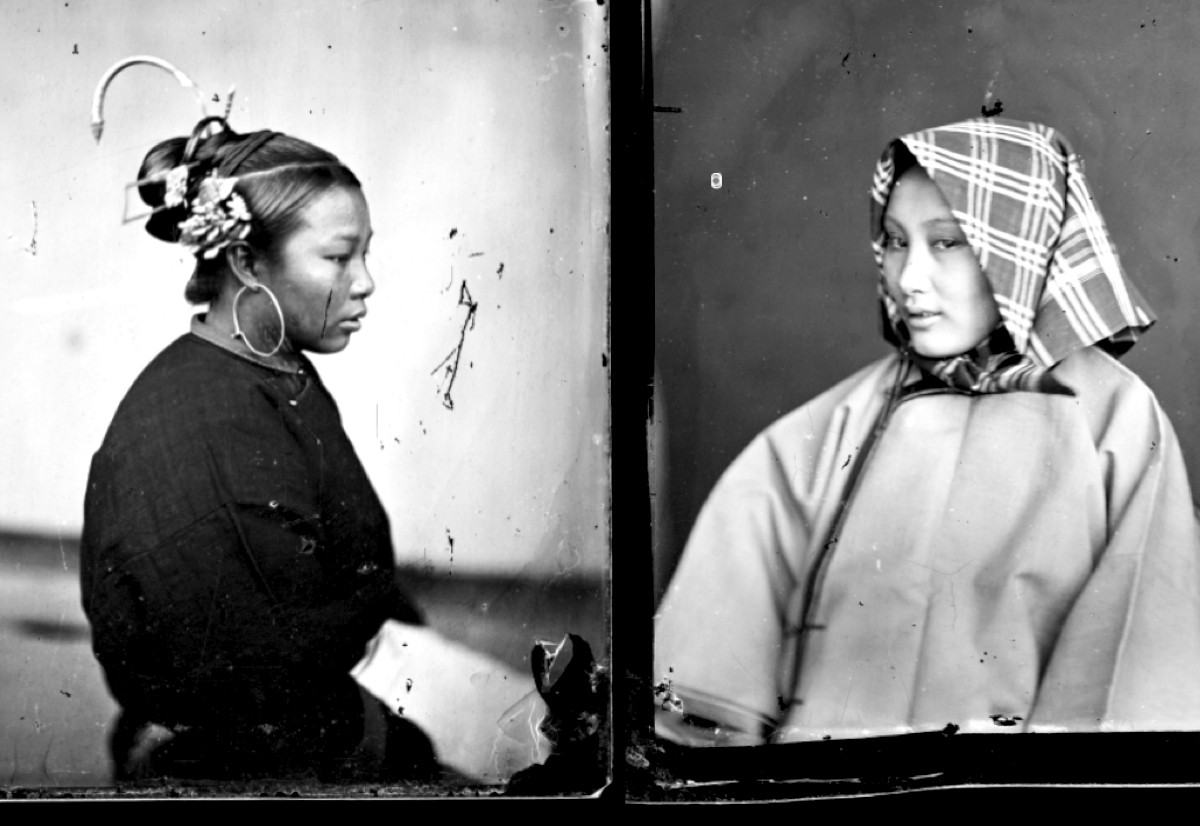 Author: John Thomson, 1869 / Credit: Wellcome Collection
Author: John Thomson, 1869 / Credit: Wellcome Collection
In this attempt to educate on the former presence of black Chinese types in pre-modern China, it seems logical to contrast these women photographed by John Thomson. The woman on the right is representative of the Han ethnic group, today the majority population in China. The young Foochow ?field woman? on the left represents one of the aboriginal peoples then living in Fukien province. The nurses at Foochow?s Magaw Memorial suggest a similar type.
Anthropological science, by the way, suggests that some of China?s aboriginal folk are distant relatives of the Melanesian (literally ?black islander?) people that today populate the islands of the South Pacific. Thousands of years ago, before branching out into the Southern islands, the ancestors of Melanesians made their home on the Asian mainland.
?Dark-skinned?and Vicious!?
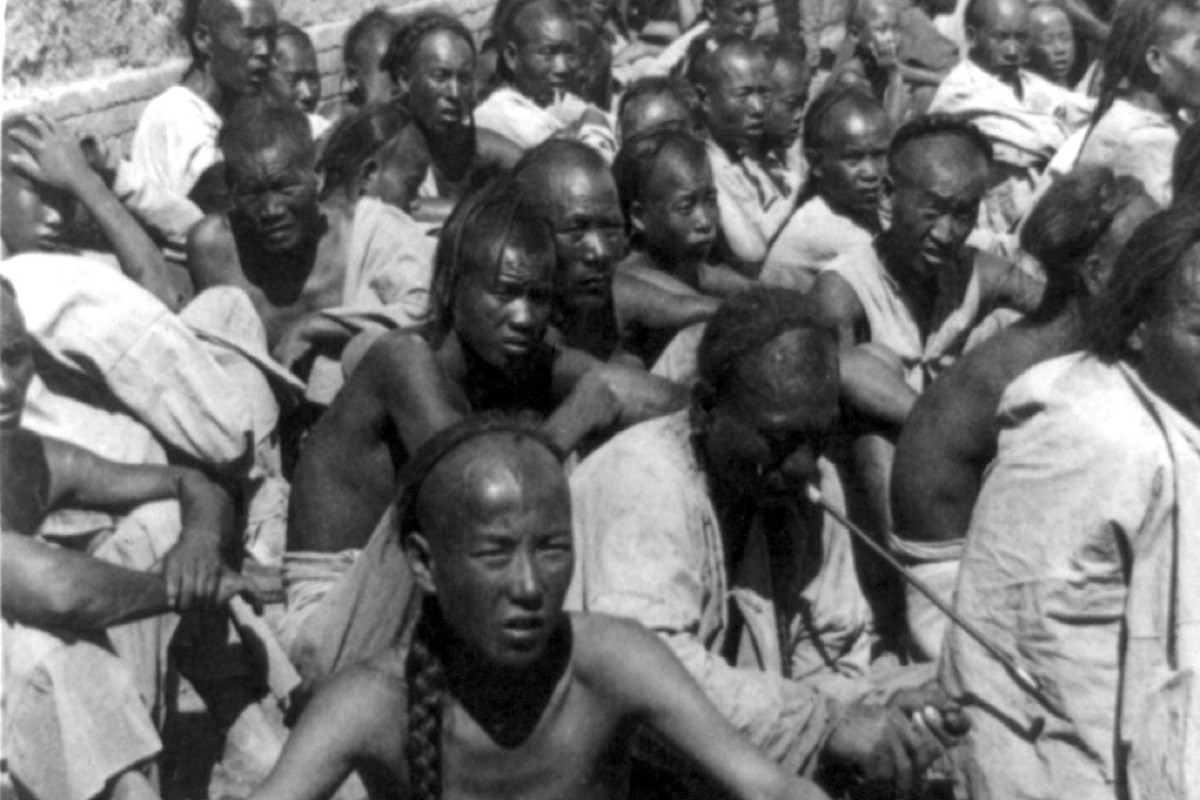 Author: James Ricalton, 1902
Author: James Ricalton, 1902
In his 1902 book The Boxer Uprising, American photographer James Ricalton includes this photo of several dozen men, many of them likely to be executed the next day for their part in the Boxer Rebellion. The latter was a bloody, anti-foreign and anti-Christian uprising that took place between 1899 and 1901; the 2006 Jet Li film Fearless was inspired by events that took place in the aftermath of the rebellion. The same is also true of the 1971 Bruce Lee film Fist of Fury.
No actors in the aforementioned films ? nor any other martial arts films set in pre-modern China ? ever had actors resembling the non-Han Chinese mixed in above. About them, the racist Ricalton writes:
?This is truly a dusky and unattractive brood. One would scarcely expect to find natives of Borneo or the Fiji Islands more barbarous in appearance; and it is well known that a great proportion of the Boxer organization is of this sort; indeed, how dark-skinned, how ill-clad, how lacking in intelligence, how dull, morose, miserable and vicious they appear!?
Chowing Down in Tianjin
 Author: James Ricalton, 1902
Author: James Ricalton, 1902
If not for the varying types in the previous photo and all of the preceding, it might be difficult to know what to make of this odd-looking family dining in the rubble of the Boxer Rebellion. Their home destroyed, they sit together ?chowing,? as happily described by Ricalton. Pointing out that they?re a family of the lower class (like the majority of Chinese then ? duh), the author expresses amazement at how they ?sit in the hottest midsummer sun, and, like all others among the lowly whom we have been studying, they are without head cover.? (See: Melanin)
Two Chinese Musicians
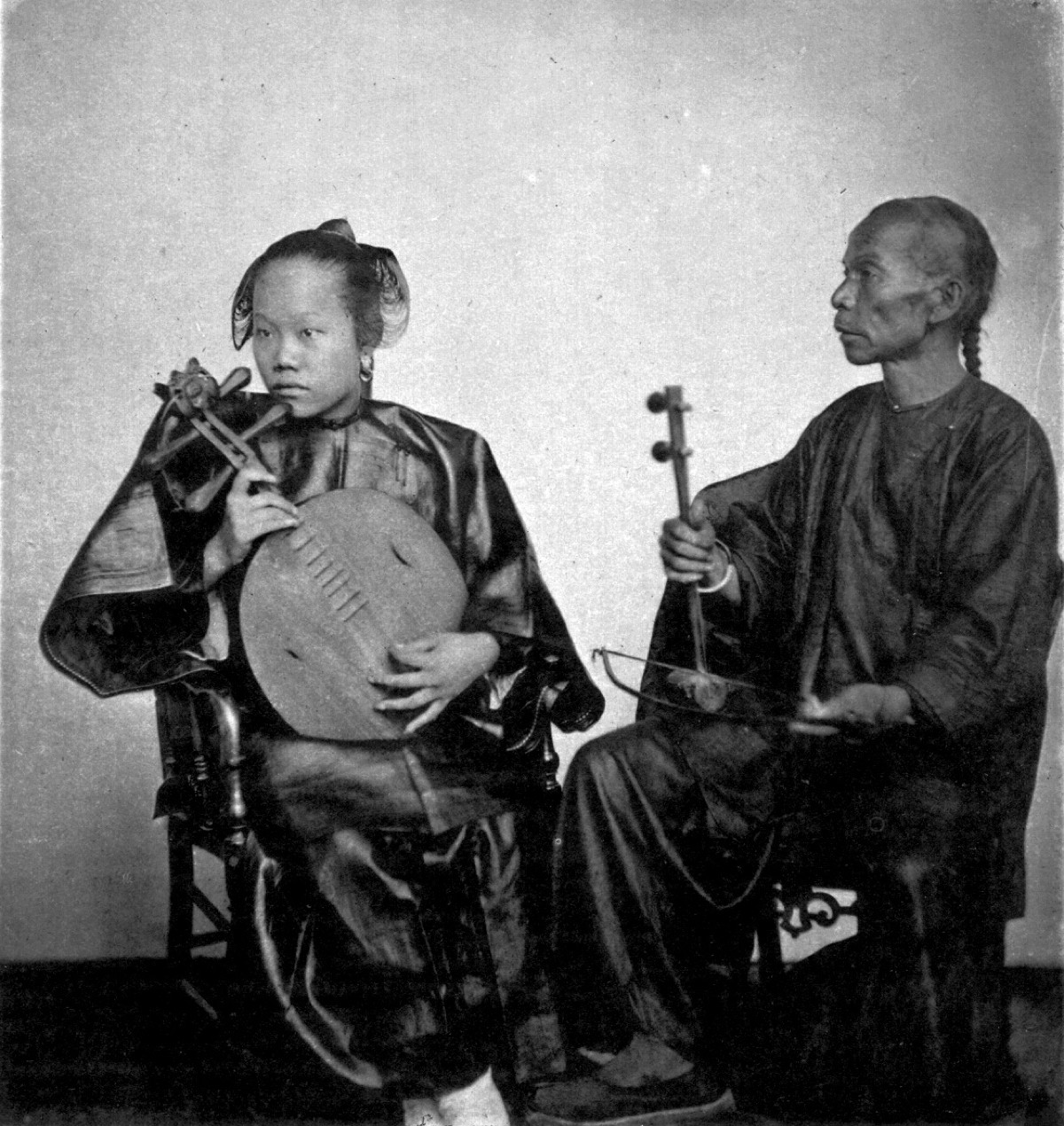 Author: John Thomson, 1869
Author: John Thomson, 1869
The two musicians shown here posed with a Chinese moon guitar (yue qin) and violin offer a somewhat more organic contrast of two very different physical traits. This photo, and the final two that follow, were published in Illustrations of China and Its People, John Thomson?s 4-volume photographic account of his time spent in China. The photo was taken in 1869 in the city of Canton (aka Guangzhou), located in Guangdong province. Canton is about 80 miles from Kowloon, the area in Hong Kong where the first family eating a meal was photographed.
Chinese Lute Player With Child
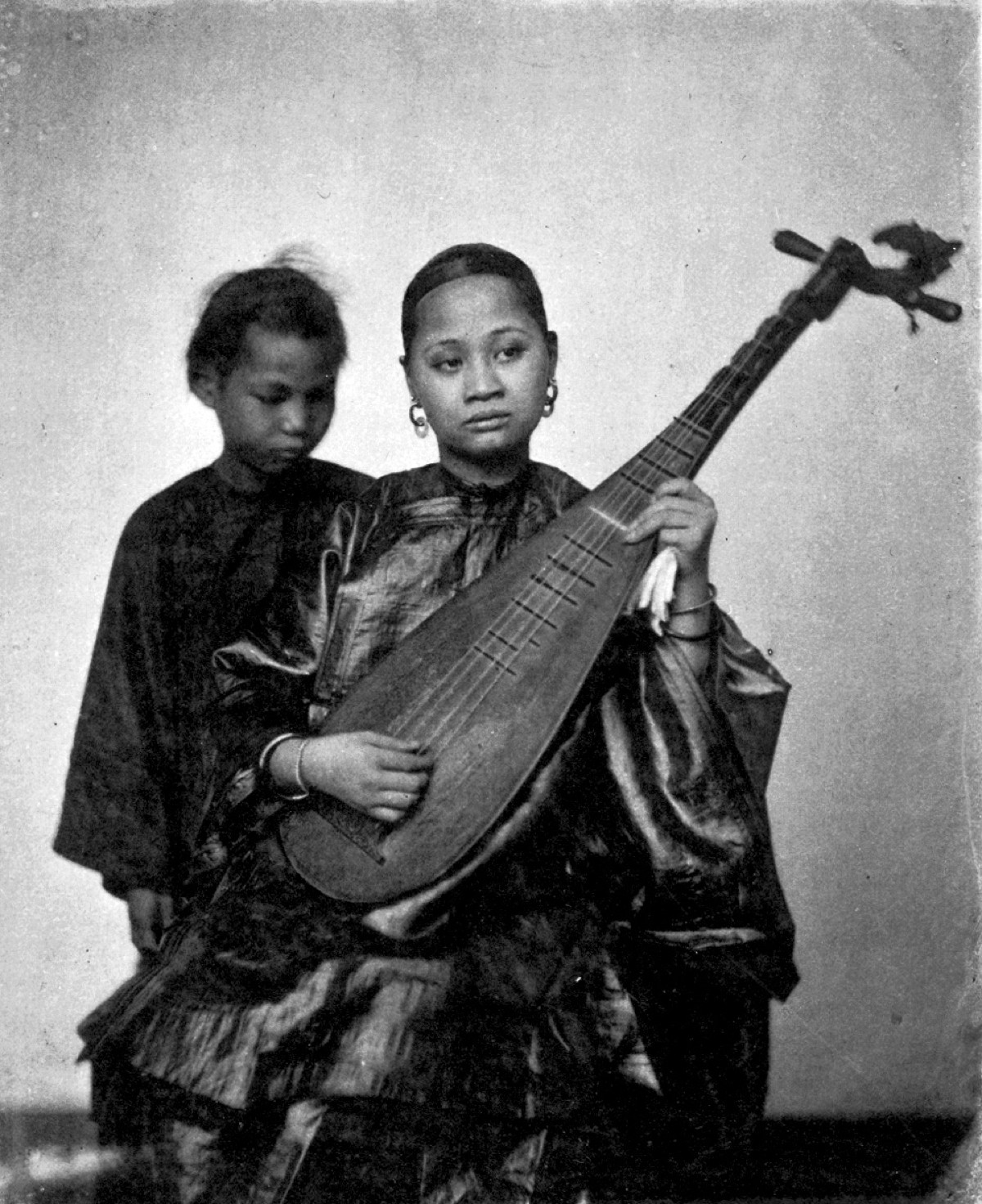 Author: John Thomson, 1869
Author: John Thomson, 1869
Despite their being photographed separately, the woman playing the pipa or Chinese lute as her son stands behind with his head lowered was featured in Illustrations of China and Its People, alongside the previous photo of two musicians. Despite them being featured in separate photographs, all three players were actually members of the same musical troupe. And the reader will observe that the woman and child in the frame above, and the gentleman in the previous photograph, all share similar physical traits, insinuating perhaps some familial connection.
Black Tea In Canton
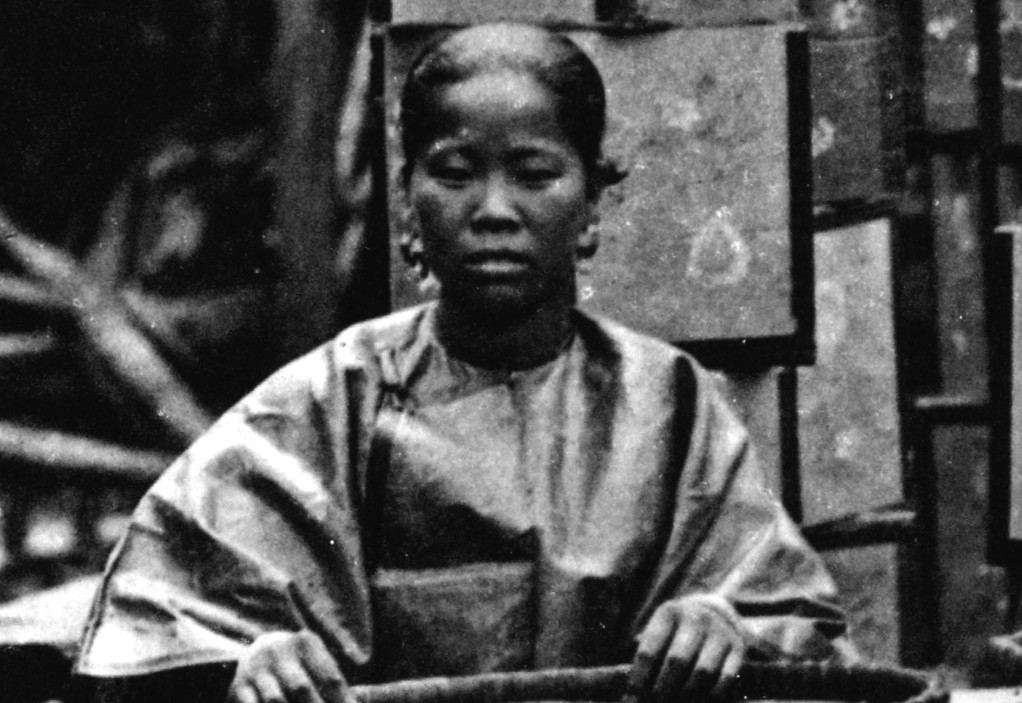 Author: John Thomson, 1869
Author: John Thomson, 1869
In this third photo from Thomson?s Illustrations of China and Its People, also shot in Canton, the author covers black tea cultivation in Guangdong province. A vital element was the sorting by hand of stems and other undesired elements from the valued leaves. The process was normally handled either by women or children, and a photograph of four women in the process of sorting leaves is furnished. The actual photo, however, shows four women, but the one sitting to the left of the others is singled out above for reasons that should be obvious.
 Author: John Thomson, 1869
Author: John Thomson, 1869
What will be less obvious is the fact that all of the photos featured in this essay were taken by six photographers over a span of 50 years, between 1869 and 1919. And the locations where the images were captured spanned the face of China: From a small town in what was once held by China as its ?Pacified South? to its capital city of Beijing in the north, people like the woman above???black Chinese???played incredibly surprising and largely forgotten parts in unwritten chapters of Chinese history. But their pictures offer historians a great place to begin.
Paco Taylor is a writer from Chicago. He loves old history books, Japanese giant monster movies, hip-hop, anime, comics, Kit Kats, and kung fu flicks.
